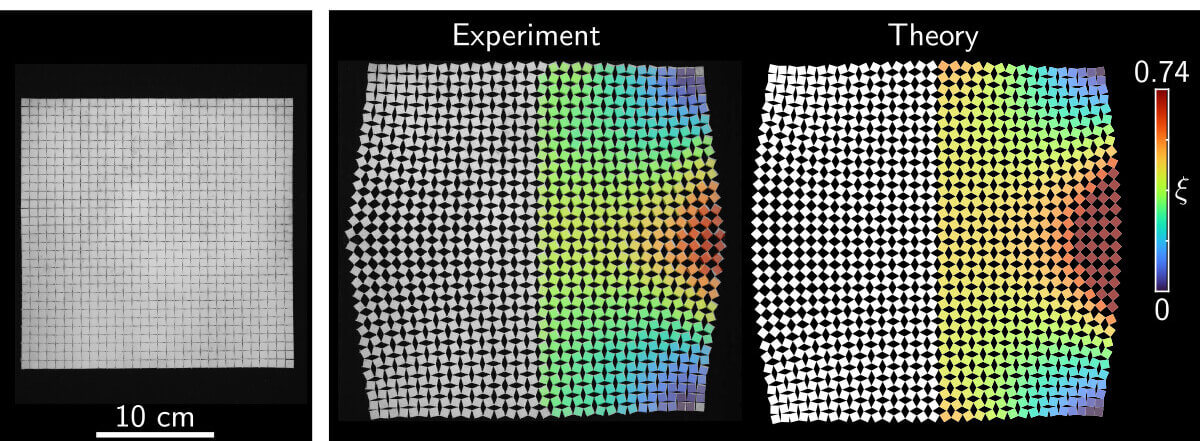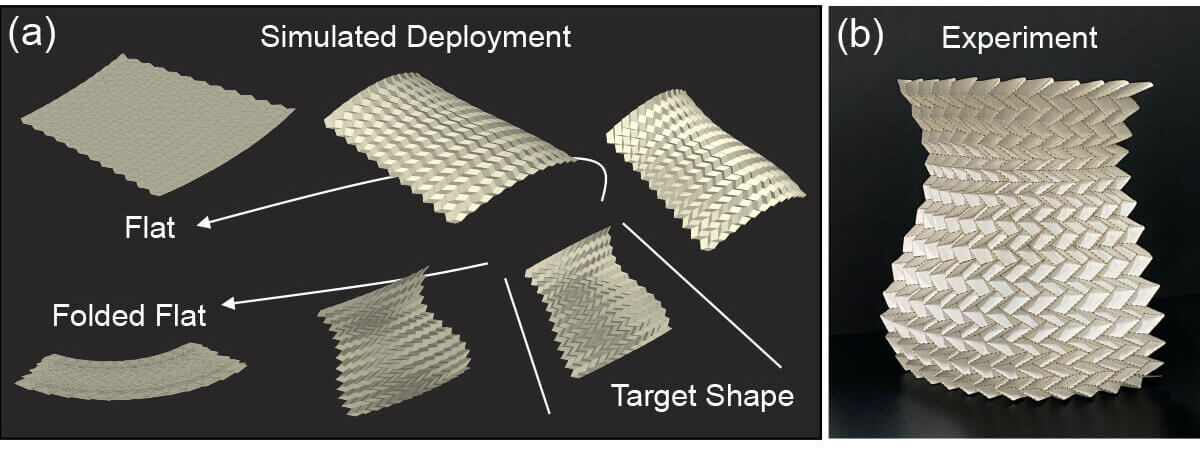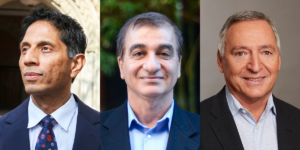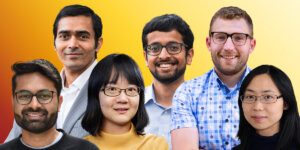
Bending the corrugated Miura Origami pattern to form the shape of a saddle
Paul Plucinsky identifies as a problem-solver first and foremost. As an assistant professor in the USC Department of Aerospace and Mechanical Engineering (AME), he develops theories that capture how and why materials work, generating predictions relevant to the design of new materials, structures and devices.
While Plucinsky’s work might seem more abstract than the applied engineering that is typically practiced at AME, his work has a uniquely visual quality – such as his investigation of origami and kirigami techniques to predict how new metamaterials behave. Other topics explored with his research group have included nematic elastomer sheets, shape-memory alloys and phase transitions in nano-structures.
Plucinksy’s research has now been honored with a prestigious National Science Foundation (NSF) CAREER Award, designed to support early-career faculty who have the potential to serve as academic role models in research and teaching.
For Plucinsky, the five-year scope of the award is a significant perk – it means that he can dedicate time to untangling complex problems with a longer timescale than a traditional three-year proposal.

A “rotating-squares” kirigami pattern morphs by opening up the slits
“I’m a fairly weird researcher for an engineering department to have, because my work is very fundamental – I’m interested in generalizing on the properties of materials and structures,” he explained. “Metamaterials, for instance, are made of building blocks stitched together to form a pattern. My research asks – what is it about the pattern that allows these materials to morph into different shapes under different conditions? I want to develop equations that identify this relationship for broad classes of examples.”
Engineers developing applications for material science and manufacturing can use this information to choose a pattern that will demonstrate a certain functionality. By extrapolating from the small-scale physics to the engineering scale properties of a material, Plucinsky’s theories can predict how metamaterials will respond to different stresses and loads, thereby informing design rules and models for these systems.
Plucinsky gives an example of Miura origami, a method of folding a flat surface into a smaller area. “These types of structures are useful for deploying in applications such as biomedical devices or space structures – there’s always a need for a collapsible pattern that can be packaged and then easily unfolded to form a specified surface.”
Through analysis of the fundamentals, Plucinsky’s predictive models allow engineers to easily adjust materials to attain a desired property, removing the need for prolonged investigation or excessive simulations. There’s also the opportunity to explore uncharted territory.

Optimization framework for origami structures that are collapsible, easy to manufacture and fold into target shapes on demand
“Based on the analysis we’re doing, we can potentially design new systems that haven’t been considered yet,” he said. “I really enjoy working on these fun new materials. Origami is considered an art form, but it’s also a material system that manufacturers really want to use. There’s a fascinating confluence of manufacturing and material science that enables creating these types of patterns in a systematic and easy way.”
Plucinsky looks forward to diving deeper into identifying the intricate patterns of metamaterials, seeking out new puzzles that generate new answers – and ultimately, new materials.
“I want to work on problems that are at the forefront of theory in solid mechanics, and I want to do them in a way that is as systematic and rigorous as possible,” he said. With the support of his NSF CAREER Award, Plucinsky has his work cut out for him – let’s see what unfolds.
Published on July 25th, 2023
Last updated on July 25th, 2023













